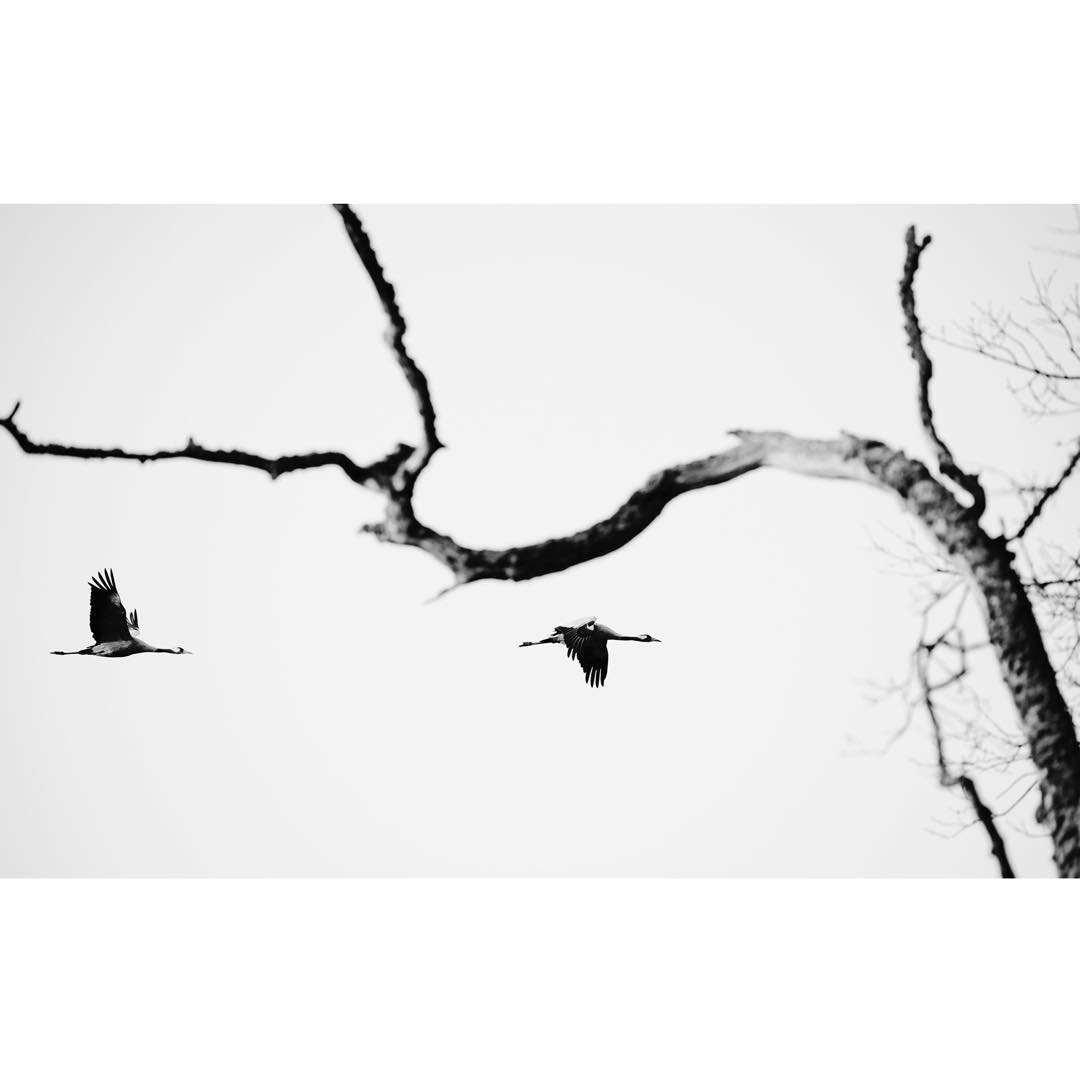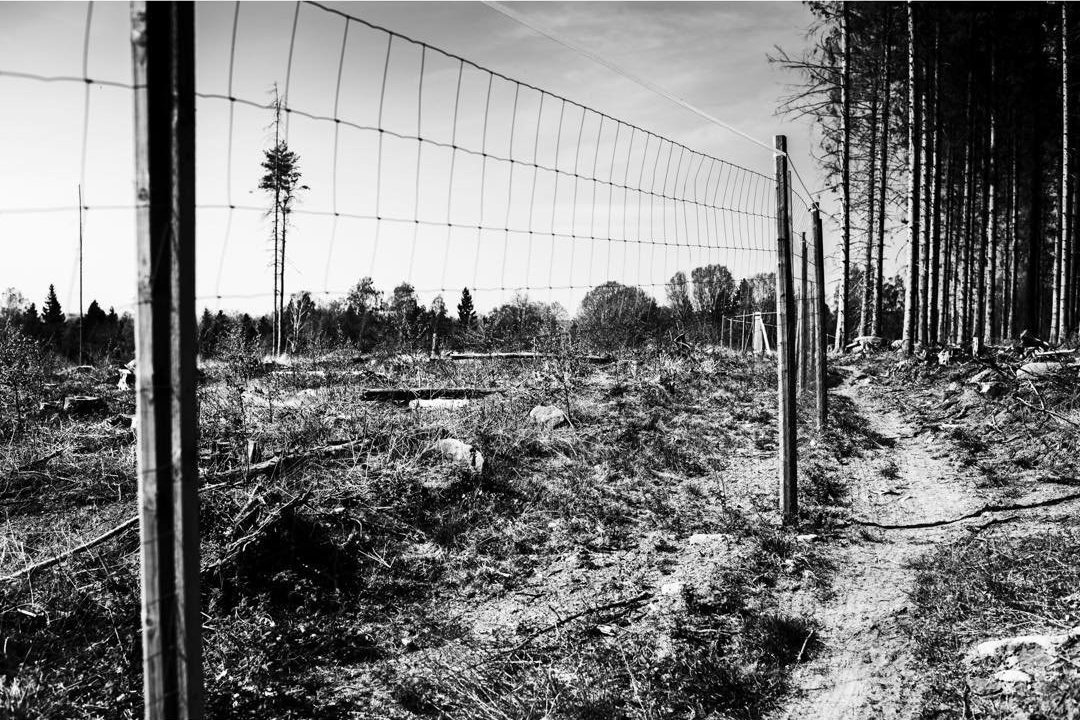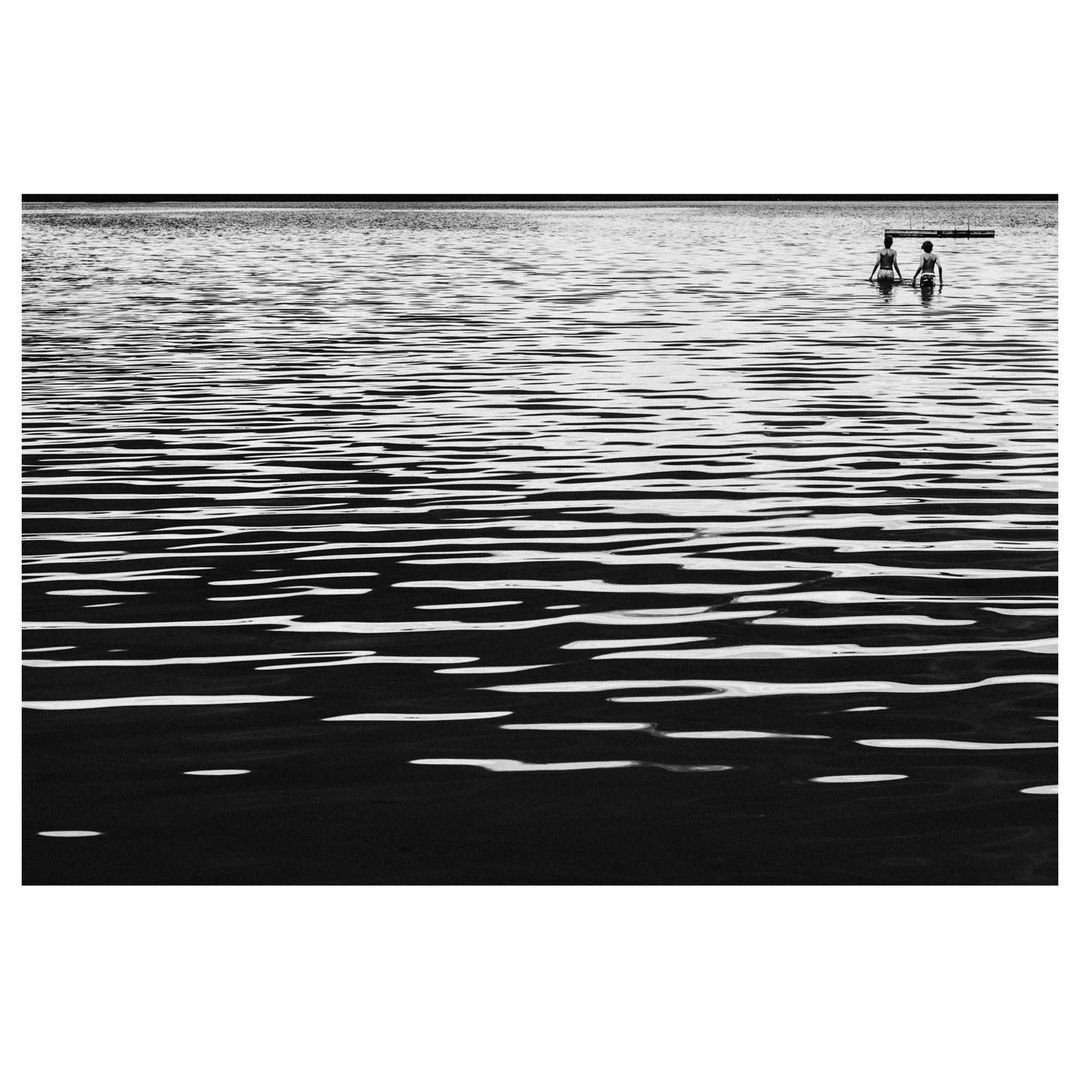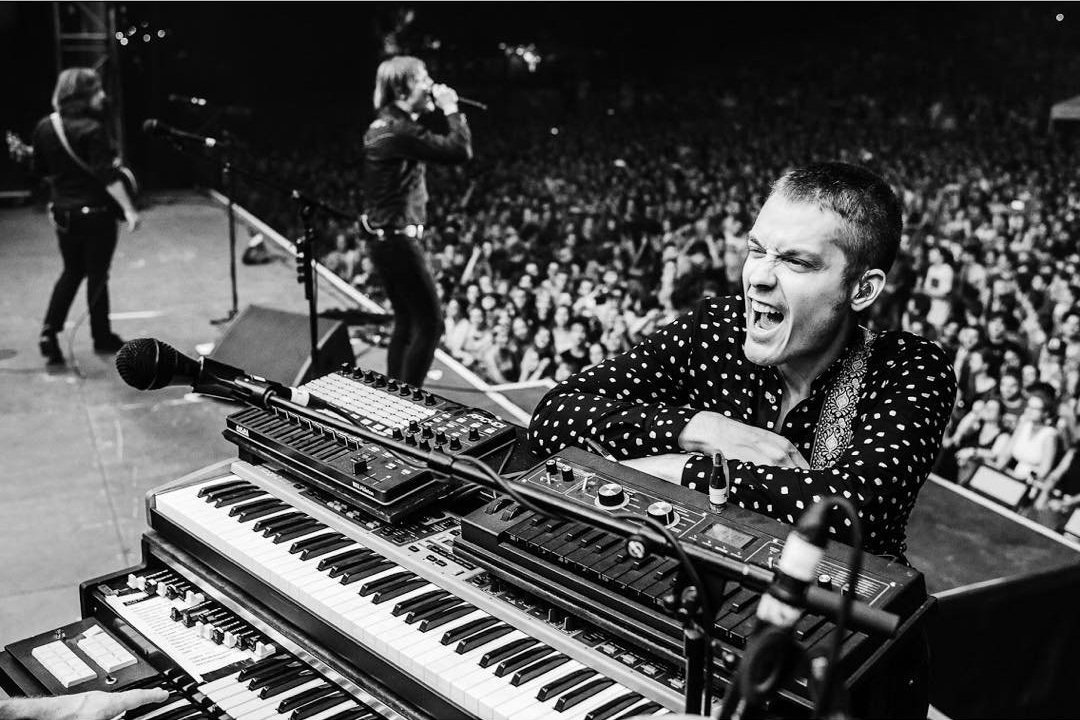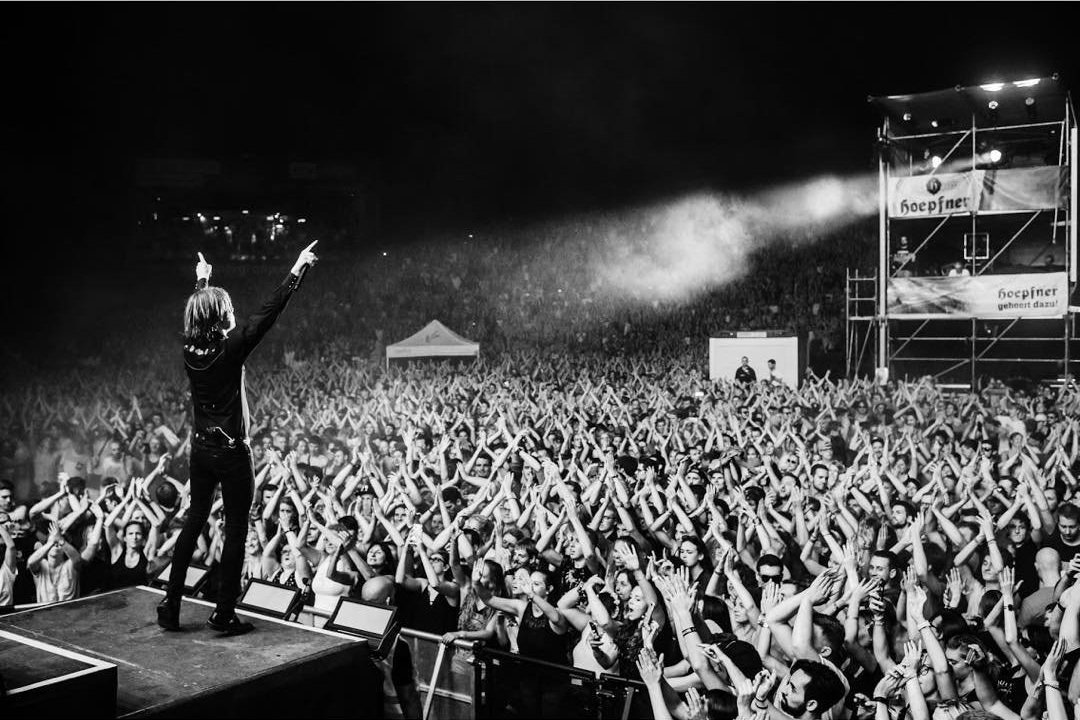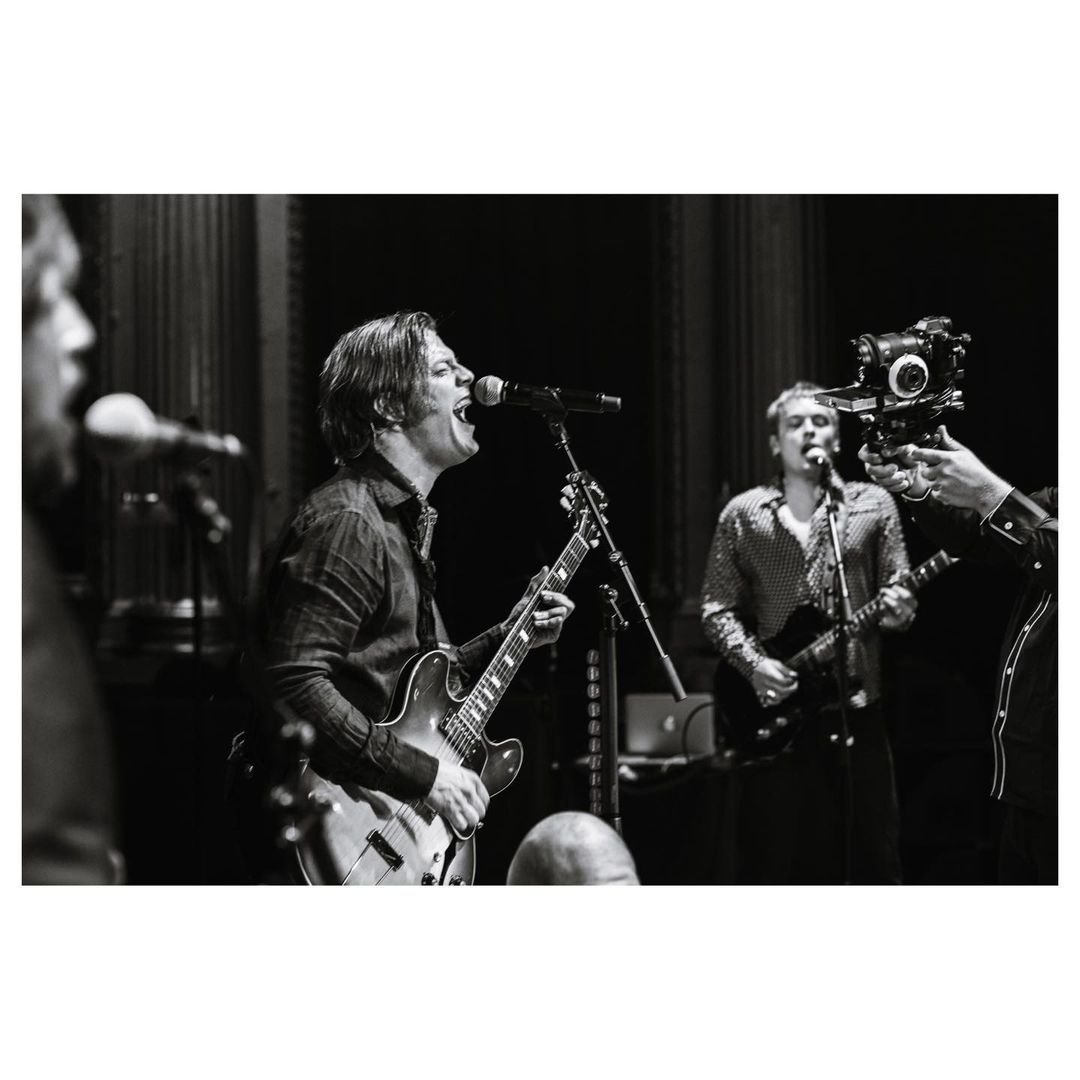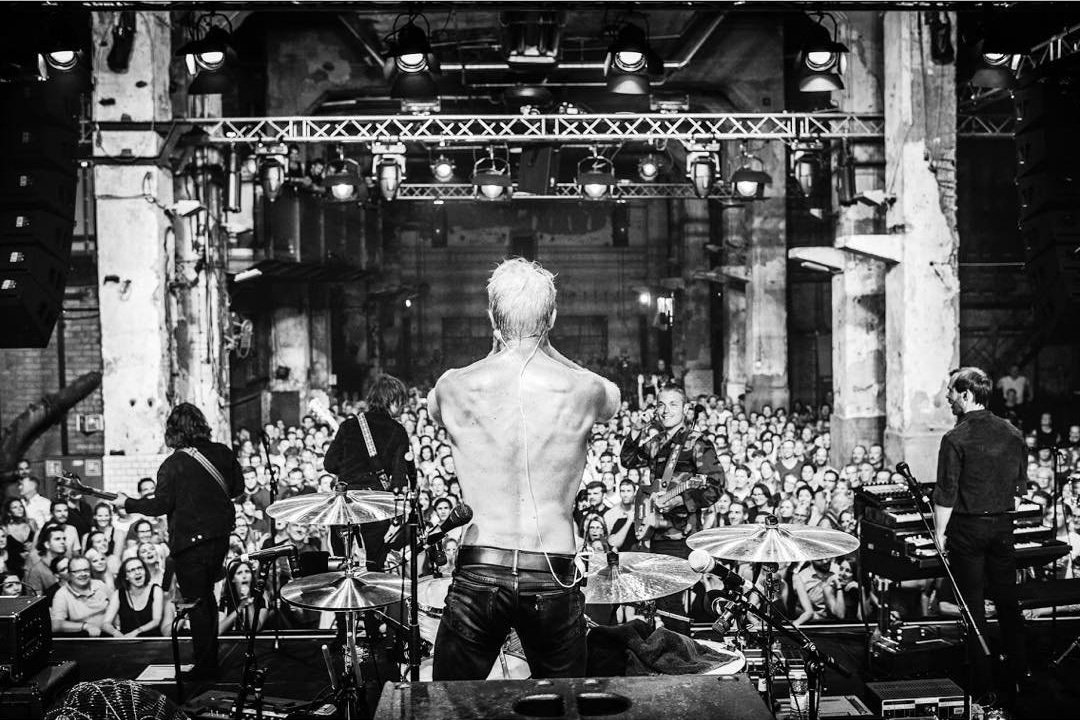Artist in conversation: GUSTAF ELIAS
Gustaf Elias is the founder of Gustaf Elias Studios; a platform for creation and visual expressions; a creative agent within photography, videography, art direction, arts and design.
Gustaf is a multi layered creative soul, with high ambitions. Since childhood fascinated by colors, shapes and visual expressions in all their forms. Studies in art history and visual cultures, together with architecture, economics and liberal arts, have contributed with an extensive knowledge, multilateral thinking, but foremost the development of a personal aesthetic vision. Assignment based photography and artistic projects form the core of the studios' activities today. There's a special passion for music photography and stage expressions. However, the search for the iconic, immersive expressions and affecting emotional conveyance is a driving force, no matter the genre. Images are living things, stills and video likewise. They are more than information, entertainment, or content. His imagery is also about attitudes, visions, and soul. Great imagery can bring forth important spaces for reflection, when art gets to meet with function and needs. The studios' production range multiple fields of practice in addition to photography. With assignments spanning from design, architecture, art direction and layout; editorial production; video, film and screenwriting; to artistic production, lectures, exhibitions, and more.
During his later teens Gustaf started exploring the world of photography. He began his professional career as an
in-house photographer at the local nightclub in his hometown in Sweden. This rendered the first glimpses of music photography, and sparked the interest for these and other fantastic worlds. After a first meeting at 'Bråvalla Festival' in 2017, he has collaborated and toured with the Swedish rock band Mando Diao. This collaboration, together with inspiration from some of the 20th century's masters of music photography, such as Anton Corbijn i.a., has influenced Gustaf in the development of his own aesthetic vision.Gustaf is an artistic autodidact, with a bachelor degree in Art History and Visual Studies together with a foundation on liberal arts, architecture, and economics. Elements as design, colors, and form, has fascinated since the young years. Moreover there's a solid interest in tennis and music.
Website | Instagram | Facebook | LinkedIn
What initially inspired you to become an artist, and how did you develop your unique style?
I guess the art, beauty, and creation has always been within me. Watching, painting, drawing, modelling – or as I remember also just standing in awe and admire the patterns of how railway tracks intersect, facades in a city, the curve of a car or a flowerbed in a garden. And Movies. God, I loved going to the movies when I was young – and still do. What an arena for immersive expressions and emotions.
After I graduated from high school I was a bit lost of what to do. Though, some years earlier I had bought a camera to document a school project and combined with my passion for music, visuals, shapes, colors and exciting, dreamlike environments, I soon found my way to the local night club. There I started out my career as an in house photographer. Clubbing never really interested me back then, but trying to make images of the scenes really did.
I later went on to study art history and visual cultures. I have applied for dedicated art schools, but never really been interesting in committing to them. I like the academic world and somehow combining my traversing field of studies on university with my head and its inner world. It becomes a platform from where I find whatever perspectives and projects to develop and draw upon in my creation of imagery. Thus my images often becomes layered or superimposed, and makes some image series quite complex. It’s often more beneath the sheer surface of visual expression.
My image world spans multiple fields, but closest to heart has been the music world, on-, off- and backstage. In this world I can combine a gaze at the so called “reality” with exploration of the imaginary, emotional and otherworldly. In the beginning I made up I had a music magazine to get accreditation to the biggest stages and festivals in Sweden. This was a way in to another world, where I could explore and expand upon my photography and taste.
On my dad’s record shelf I had come across many interesting album covers since younger age. But none quite as like Anton Corbijn’s work, and subsequently his inspiring long term collaboration during the 80’s and 90’s with U2. If I am to mention one name as inspiration, among the many, it is Corbijn’s. I was almost disgusted and certainly confused at first with his challenging aesthetics. But later it grew on me, and I was hooked. And his world definitely spans beyond just music photography. I’m not that big of fan of genres. I like fascinating expression. And in photography I want what is genuine and seemingly alive. Too much music photography, and else, today isn’t. It’s not just about good compositions or fancy filters or the perfect pose. Those things grows tiresome and empty quickly. It’s so much more interesting with the things poised. Poised ont the edge of perfect imperfection. Neil Krug is another contemporary photographer that is really inspiring. Not to mention Wim Wenders films, David Bowies music, or the whole history of art. Where do I begin, to tell the story...
So I guess, as in my artistic inspirations, I look for imagery that is both aesthetically pleasing and experimentally, and documentary, and filled with emotions.
But as it is with art and creation in general, you can’t really say from where you draw your inspiration, or what shapes your style. The style is hopefully you. And you may say from where the inspiration comes, but even if you do that doesn’t make it certain it’s actually what you say it is, and it being what in the end actually goes into your work. Creation and inspiration is a funny and complex thing. It’s a living thing. I’m always looking for expressions, new or classics, to inspire me. Browsing collections, listen to music, go visit museums and exhibitions, sites, or advertisements in town, or whatever.
In the end it’s about expressing something inside of oneself, mediated through something that others can see, hear, engage with or else wise make something out of. I want to make impressions. Leave others with a feeling, a thought, or just something that matters just a little.
In terms of subject matter, what themes or motifs do you frequently explore in your work, and what draws you to these topics?
This one is hard to summarise or really pin point. But I would say the themes I explore often begins in poetry somehow. I like a poetic touch in imagery. I write some actual poetry myself, not to mention all the music I consume. Many series and projects also starts in a thought or as a theoretical reasoning or idea. I believe here is where my many academic years plays into my creation. My image series ‘Iconic Ironic Places’ is a clear example. This one I built from play with visual cultures and a theoretical and philosophical discussion on places and place creation. It all began in the books and a text, developed through my head – yes I think a lot – and finally mediated through photography and painting.
Is it music photography, landscape, people, life style, commercial I do? I can’t tell, and I don’t really care. Roland Barthes has written on image creation and photography in particular that images that interest do so from two aspects: “studium”, the general interest an image can have from what it depicts, and “punctum”, the thing, the it, that pierce you and your soul. I guess I look for images that might hold a punctum for me and others. The it that makes the image interesting beyond just being a nice, cool or good image. The thing that makes you want to look at it just a bit longer. At best you can somehow get some kind of mystery in there.
So I explore themes and motifs, no matter the genre, that can tell a story, convey an emotion, or just be something more for someone.
Can you discuss a specific piece or project that challenged you as an artist, and how you overcome those challenges?
There are many. And the process is always like the five stages of death or grief. Maybe not really... First you shout, then maybe cry, then ask yourself why, then whatever else feels necessary. But in the end it’s abut finding a way. If you’re afraid of getting a no don’t bother asking for permission, or find a work around. If the images doesn’t turn out as intended, let it rest and find a context in which it does. If your told you can’t photograph with a camera that makes even the smallest sound during a rehearsal for a classical concert, when your asked to follow the conductor in a way no one did before, pull the trigger at the exact moment in the crescendo... the situations and overcomings are many.
In 2017 I met with the Swedish rock band Mando Diao at a festival. The band is one of Sweden’s most successful rock acts after the turn of the millennial, with a big fan base in Germany. The connection led to me collaborating with the band since and I have been joining on tours in Sweden, Europe and China.
It’s always a blast being with the guys and making images with them. But yes it’s been challenging and tough as well. Nervous, you don’t want to fuck things up. Pressure, you do want to deliver – not the least for your own sake and your creative vision, the urge within.
As a rock photographer you’re out there on your on. Me going to China was an adventure in itself. Lost my suitcase with important gear in a cab in Shanghai...how did I find it? (Another story.) Had to chase the band down a couple of times. And do a band shoot with only 15 minutes notice, without any artificial light in a quite dimly lite part of The Bund in the Shanghai night. You just go out there, it’s terrifying at times when you are just out of your own depths. But hopefully you’re a good friend of the band and manager, and you will get the intimate and intriguing scenes that are worth the struggle. I often get to feel I’m both on the inside and outside at the same time when I photograph. It’s a balance act photographing people even if you think you know them. You need to be sensitive. It’s not abut rushing around with a camera making thousand of images. But know when to. Sometimes you may just have to be all over. Other times just wait for the exact right moment to press the trigger. You don’t want a thousand images, no one wants. You want one really good, the one telling, or if it’s a good run an album of selected frames. It’s a lot of being a fly on the wall, and I like this way of working.
More so, often no one really tells you what shots they want or any specifics about the images. It’s a blessing and a curse. But this is the thing about life and being an artist. You have to break free, and you have to believe, that somewhere in you someone or something is telling you were to go. In many aspects your mind is beyond theirs, they need to have faith in you and your creation and that you will bring good things and images from that realm of yours. You have to believe this too. And that realm is you and your fountainhead. You have to be certain of your own style, your way of thinking and creating, and have if not a clear idea so at least a feeling of what you want to achieve. This doesn’t say you have to have everything figured out. But once you succeed in free floating in the unknown and becoming somewhat comfortable there. Then I say as Giorgio Moroder, then you can do whatever you want.
How do you stay connected with other artists and keep up with new developments and trends in the art world?
Travel and keep your eyes and senses open. It was the first thing they taught me on the art history seminars – how to see. Not just looking, but actually see and observe. And when studying architecture we often went on field trips. It might seem unnecessary in today’s world where everything’s readily available online. But I can not stress this enough – travel. Go places. See places. Think and reflect. Read and study.
This is my way. I flip through magazine, go to the movies, study intriguing or real bad ads designs in town or in the papers. Visiting museums, go to exhibitions, talk to friends who together spans multiple fields of creative practices and knowledge. I participate myself in exhibitions, follow my on social media and engage more or less in the many channels and platforms out there. I have no real cultural heritage or parents with a lot of knowledge in the business, more or less none in fact. So I have had to build my world from scratch. However tiresome it can be I know no other way. But sometimes you just need to focus at what is around you and your own practice. Then I do. It’s an overload of information out there. You have to sift and move on. And nothing beats the real deal, experiencing art or expressions first hand.
Then again, trends. I don’t really know or care about them. They can stress you out. And in the end you have to do what engages you within, what seems meaningful for you and what keeps you going. If you do it good, the right things will be in the work, and if you present it in an engaging way and expressively enough people will listen and look at what you do.
How do you incorporate feedback from critics and audiences into your artistic practice, and how do you balance this feedback with your own artistic intuition?
This is tricky. Or it isn’t. I have a heading, not always clearly expressed not even for myself. But I have a belief and an idea of what gets me going. I have to believe I am the fountainhead and that my ideas are good in one respect or the other, what sense would it make otherwise? Or as David Bowie is quoted: “Never work for other people...always, always remember that the reason that you initially started working was that there was something inside yourself that you felt, that if you could manifest it in some way, you would understand more about yourself and how you co-exist with the rest of society...”
The critique is important. Mostly because it’s an opportunity to discuss things and open up perspectives. It’s the academic inside me speaking. The critique can shed light on things you might not thought of or missed. Aspects that present ambiguity or misinterpretation. Sometimes you want this ambiguity, sometimes not. Knowing about it gives you a jump start.
But I guess it’s constantly ongoing process. You’re never done. Never finished. You just keep going, exploring, expanding and improving. I incorporate the feedback in my work, but I also know what I want to say or do. Certain aspects I do not compromise over, no matter what. But again this can come down to circumstances. If a do more of a commercial job the client’s wishes of course are a big deal. But I never let go completely of my way of expression. I reason: If someone hires me they do it because they like what I’m up to, not just because I’m a designer, a photographer, or an artist, as good as any. If you want me you want me for a reason, for my way of reasoning, and my way of making imagery.
How do you stay motivated and inspired despite any setbacks or creative blocks you may encounter?
You simply break down. Then you go back to your strongest sources of inspiration or closest friends. I have one in particular, almost as mentor or life architect to me. When things get critical or diffused we can meet up in the woods or at the golf course and speak of whatever.
Your body of work spans across different creative disciplines, including photography, design, and art. How do you approach each project, and what creative processes do you implement to ensure a successful outcome?
I don’t want to be confined. And I don’t want to be my tools – my computer, programmes, pens, brushes, camera, or else wise. I approach each project as an opportunity to express something. As a chance for me to do and express something I believe in. My body of work simply spans multiple expressions and creative disciplines because this spectrum is what I need to understand myself and to express myself and the imagery in question.
As of process, iteration is most often a good thing. Go back and redo. Second time around things most often gets better. But I’m also quite often an impatient guy, thinks quickly, walks quickly, speaks quickly. I want results. I want to see where it ends, how it works out. I indulge and dwell for a while, but then I want more. This leads me constantly onwards. But again this isn’t incompatible with an iterative process. By doing, moving on, and do again, whether it’s the same substrate and idea or something new, the old is brought with me as experience and knowledge and I hopefully evolve my outcome in the process. I’m rarely really satisfied. At least it’s not a sustained satisfaction, I almost always want more.
As a multifaceted artist, how do you balance your various creative pursuits, and how do they complement each other in your work?
I don’t see my different interests and pursuits as competing or interfering with each other. If any I see them merge in fruitful interference. When I run dry in one field for a moment another might open up. Other times, most often, I deliberately let them overlap each other. Of course there’s only so much time, and you have to prioritise. Not always the most fun thing to do.
Though, in the end I don’t quite see it as if I have multiple interests or pursuits, no matter what you have to tell the taxman, it is one. A way of living, thinking and being. Too often today I think there’s an unsound specialisation in this or that. Some may have to specialise to be really good, or at least good enough, at something. But if can you be good at more than one thing, why specialise more than necessary? The more capable you are as a creative in yourself, the greater the potential of the work.
How do you feel about exhibiting your artworks with The Holy Art Gallery?
I feel very happy and excited. It’s not my first time and I’ve been happy with my previous experience. The Holy Art is a growing actor and I like what they are doing. I find it a nice way of showcasing a glimpse of my work for a wider audience right now.
Looking ahead, what are your long-term goals and aspirations as an artist, and how do you plan to achieve them?
There are some, for sure. Last three years I have started to explore the realm of architecture and architectural design. In the future I’d like expand upon this branch of creation and design field. And I’m looking forward to incorporate thoughts and ideas from an architectural world into my imagery and design. Let’s just say there are a lot of things coming, high ambitions and some big goals. But right now I will keep the rest of it for myself and my inner circle. When time is right... One day you’ll see. I can just say there are some fascinating ideas and image series cocking, and more just waiting to be realised. A head and sketch book full of ideas, is what I see when I look ahead.
This is just the beginning. Meet you there.

